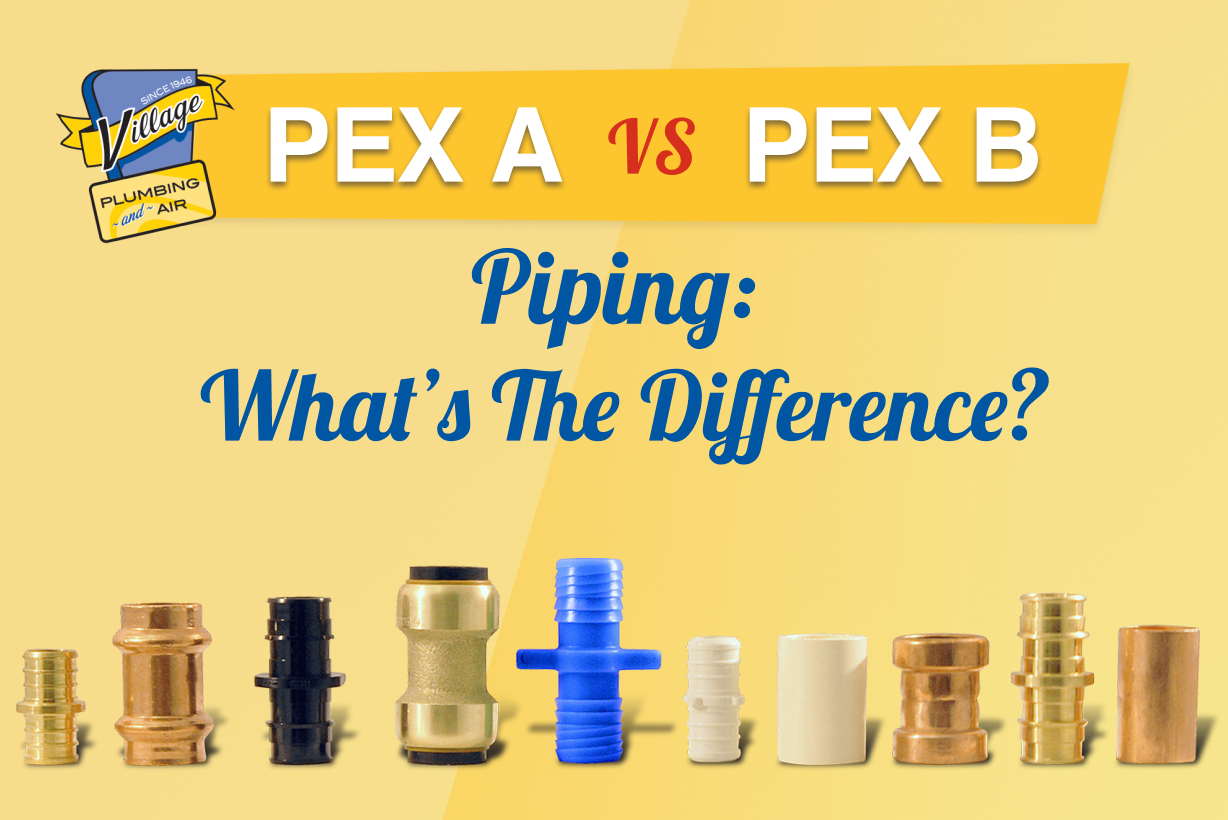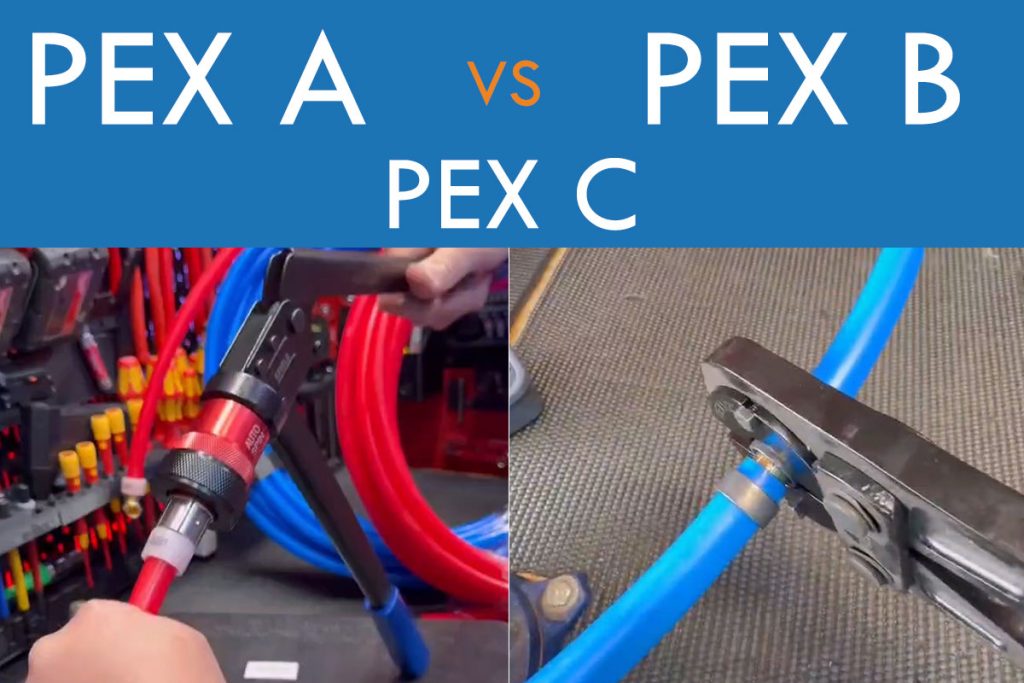Difference In Pex A And Pex B

PEX-A vs. PEX-B: Understanding the Differences in Cross-Linked Polyethylene Piping for HVAC Systems
Cross-linked polyethylene, commonly known as PEX, has revolutionized plumbing and HVAC systems due to its flexibility, durability, and cost-effectiveness. It's a plastic material made more robust through a process called cross-linking, where polymer chains are chemically bonded. This article focuses on two primary types of PEX used in HVAC applications: PEX-A and PEX-B. We will explore their key differences, advantages, disadvantages, and best-use cases, providing valuable insights for homeowners, HVAC technicians, and facility managers.
Understanding Cross-Linking and Its Importance
Before diving into the specifics of PEX-A and PEX-B, understanding the concept of cross-linking is crucial. Cross-linking is a process that modifies the molecular structure of polyethylene, transforming it from a thermoplastic (which softens when heated) to a thermoset (which retains its shape even at high temperatures). This process dramatically improves the material's resistance to high temperatures, pressure, and chemicals, making it ideal for hot and cold water distribution and radiant heating systems.
The Manufacturing Process: Setting the Stage for Differences
The distinction between PEX-A and PEX-B primarily lies in their manufacturing processes, which significantly impact their properties and performance.
- PEX-A (Engel Method): This method involves cross-linking the polyethylene before it is extruded into tubing. High-energy electron beams or peroxides are used to create the cross-links. PEX-A typically has the highest degree of cross-linking (often above 80%), resulting in a more uniform and flexible material.
- PEX-B (Silane Method): This method cross-links the polyethylene after extrusion. The tubing is exposed to moisture and heat, which triggers a chemical reaction involving silane compounds, creating the cross-links. PEX-B generally has a lower degree of cross-linking than PEX-A (usually between 65% and 80%).
Key Differences in Properties and Performance
The differing manufacturing processes lead to several key differences in the properties and performance of PEX-A and PEX-B:
1. Flexibility and Kink Resistance
PEX-A is significantly more flexible than PEX-B. This higher flexibility makes it easier to install, especially in tight spaces or when navigating around obstacles. It also makes PEX-A more resistant to kinking. If PEX-A does kink, it can often be repaired using a heat gun. PEX-B is stiffer and more prone to kinking, and kinks are generally not repairable.
Example: Imagine installing radiant floor heating in a home. The flexibility of PEX-A allows for tighter bending radii, making it easier to snake the tubing through joists and around obstructions without requiring as many fittings. This reduces installation time and potential leak points.
2. Burst Pressure and Temperature Rating
Both PEX-A and PEX-B meet the same industry standards for burst pressure and temperature ratings. However, due to its more uniform cross-linking, some argue that PEX-A offers slightly better long-term performance under extreme conditions. Always consult the manufacturer's specifications for specific pressure and temperature ratings.
3. Chemical Resistance
Both types exhibit good chemical resistance to common household chemicals and solvents found in HVAC systems. However, specific resistance can vary depending on the manufacturer and the specific chemical in question. Always refer to the manufacturer's documentation for specific chemical compatibility information.
4. Expansion and Contraction
PEX in general has a higher coefficient of thermal expansion than copper or CPVC. This means it expands and contracts more with temperature changes. However, PEX-A and PEX-B exhibit similar expansion and contraction rates. Proper installation techniques, such as using expansion loops or sleeves, are essential to accommodate this movement and prevent stress on the piping system.
5. Fittings and Connection Methods
One of the most significant differences lies in the fittings and connection methods used with each type of PEX.
- PEX-A: Primarily uses expansion fittings (also known as Uponor or ProPEX fittings). These fittings involve expanding the end of the PEX-A tubing with a special tool and inserting a fitting. As the tubing contracts back to its original size, it creates a strong, reliable connection.
- PEX-B: Commonly uses crimp fittings or clamp fittings. Crimp fittings involve sliding a copper ring over the PEX tubing and compressing it with a crimping tool to create a seal. Clamp fittings use a stainless-steel clamp that is tightened around the tubing and fitting.
Important Note: While it is *generally* recommended to only use fittings designed for the specific PEX type, some universal fittings are available that are approved for both PEX-A and PEX-B. Always verify the fitting's compatibility with the specific PEX type you are using.
6. Cost
PEX-A tubing and fittings are typically more expensive than PEX-B. The expansion tools required for PEX-A connections also represent an additional upfront investment. However, some installers argue that the ease of installation and fewer potential leak points associated with PEX-A can offset the higher initial cost in the long run. PEX-B offers a more economical option, especially for larger projects where the cost difference can be significant.
Advantages and Disadvantages of PEX-A
- Advantages:
- Superior flexibility and kink resistance.
- Repairable kinks (with a heat gun).
- Excellent low-temperature performance.
- Fewer potential leak points with expansion fittings.
- Disadvantages:
- Higher material and fitting cost.
- Requires specialized (and often expensive) expansion tools.
Advantages and Disadvantages of PEX-B
- Advantages:
- Lower material and fitting cost.
- Uses readily available and less expensive crimp or clamp tools.
- Disadvantages:
- Less flexible and more prone to kinking.
- Kinks are generally not repairable.
- Potentially more leak points with crimp or clamp fittings if not installed correctly.
Applications in HVAC Systems
Both PEX-A and PEX-B are widely used in various HVAC applications:
- Radiant Heating Systems: Both are excellent choices for radiant floor heating, baseboard heating, and radiator connections. The flexibility of PEX-A can be advantageous in complex layouts.
- Potable Water Distribution: Both meet NSF standards for potable water applications and are commonly used for hot and cold water distribution in residential and commercial buildings.
- Chilled Water Systems: Both can be used in chilled water systems for cooling applications.
- Snow Melting Systems: Both are suitable for snow melting systems in driveways, walkways, and parking areas.
Choosing the Right PEX for Your Application
The best choice between PEX-A and PEX-B depends on several factors:
- Budget: If cost is a primary concern, PEX-B is generally the more economical option.
- Complexity of Installation: For complex installations with tight spaces or numerous bends, the flexibility of PEX-A can be a significant advantage.
- Installer Preference: Some installers prefer working with PEX-A due to its ease of use and fewer potential leak points, while others are more comfortable with PEX-B and its readily available fittings.
- Application: While both can be used in most HVAC applications, specific requirements, such as extreme low-temperature performance, might favor PEX-A.
Best Practices for Installation
Regardless of whether you choose PEX-A or PEX-B, proper installation is crucial for ensuring a reliable and long-lasting system. Here are some best practices:
- Follow Manufacturer's Instructions: Always adhere to the manufacturer's instructions for installing the tubing and fittings.
- Use the Correct Tools: Use the appropriate tools for the specific PEX type and fitting system you are using.
- Proper Support: Support the PEX tubing at recommended intervals to prevent sagging and stress on the fittings.
- Avoid Sharp Bends: Avoid sharp bends that can kink the tubing or restrict flow.
- Pressure Test: Always pressure test the system after installation to ensure there are no leaks.
- Insulation: Insulate PEX piping, especially in unconditioned spaces, to prevent heat loss or gain and condensation.
Conclusion
PEX-A and PEX-B are both excellent choices for plumbing and HVAC applications, offering significant advantages over traditional materials like copper and CPVC. While PEX-A offers superior flexibility and kink resistance, PEX-B provides a more cost-effective solution. By understanding the key differences between these two types of PEX, homeowners, HVAC technicians, and facility managers can make informed decisions and choose the best option for their specific needs and budget. Always consult with a qualified HVAC professional to determine the most suitable PEX type for your application and ensure proper installation.










